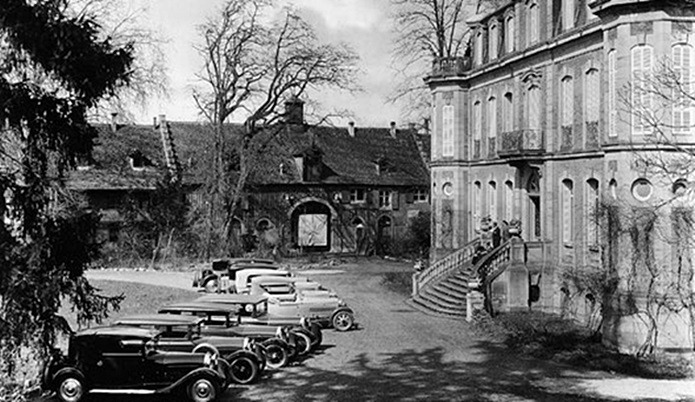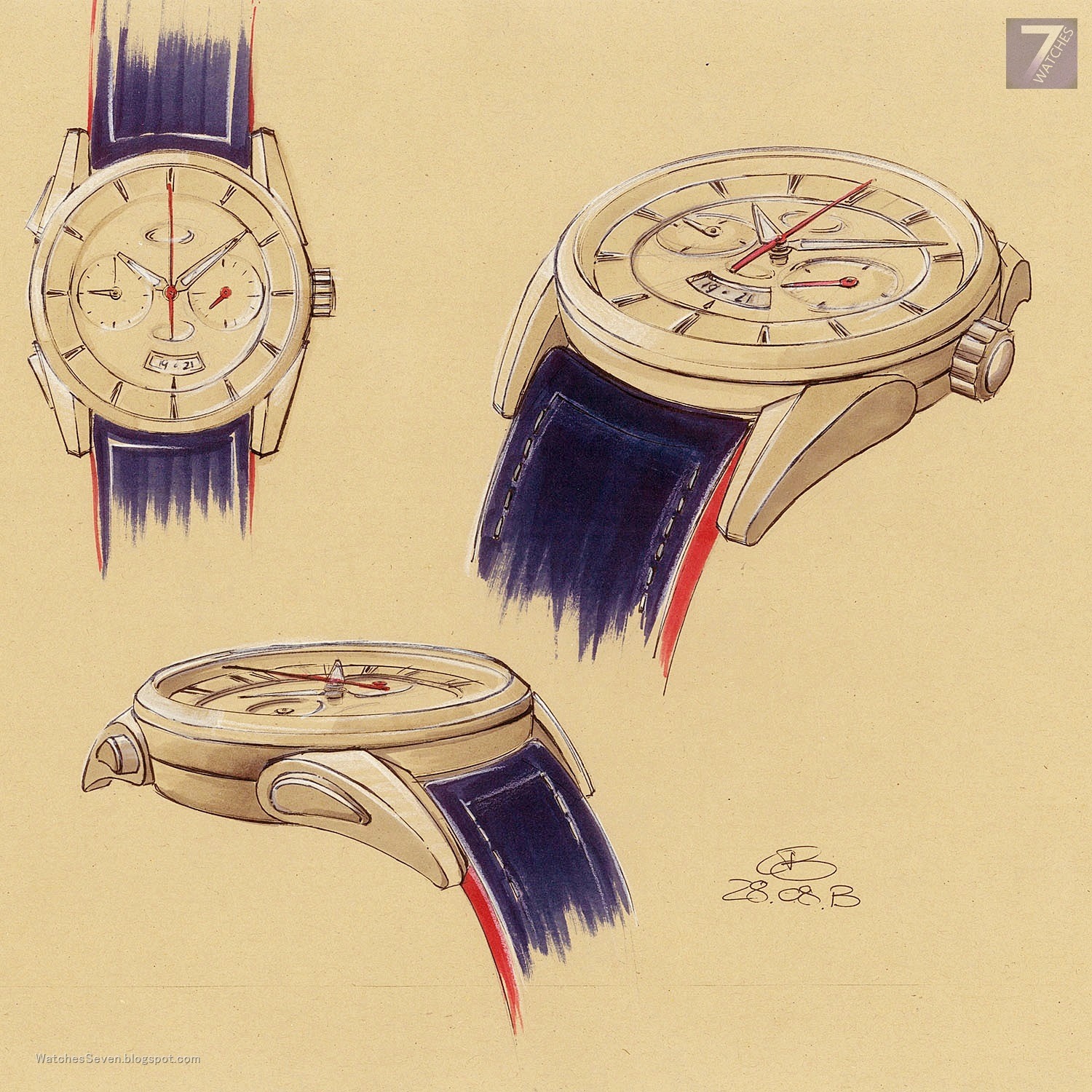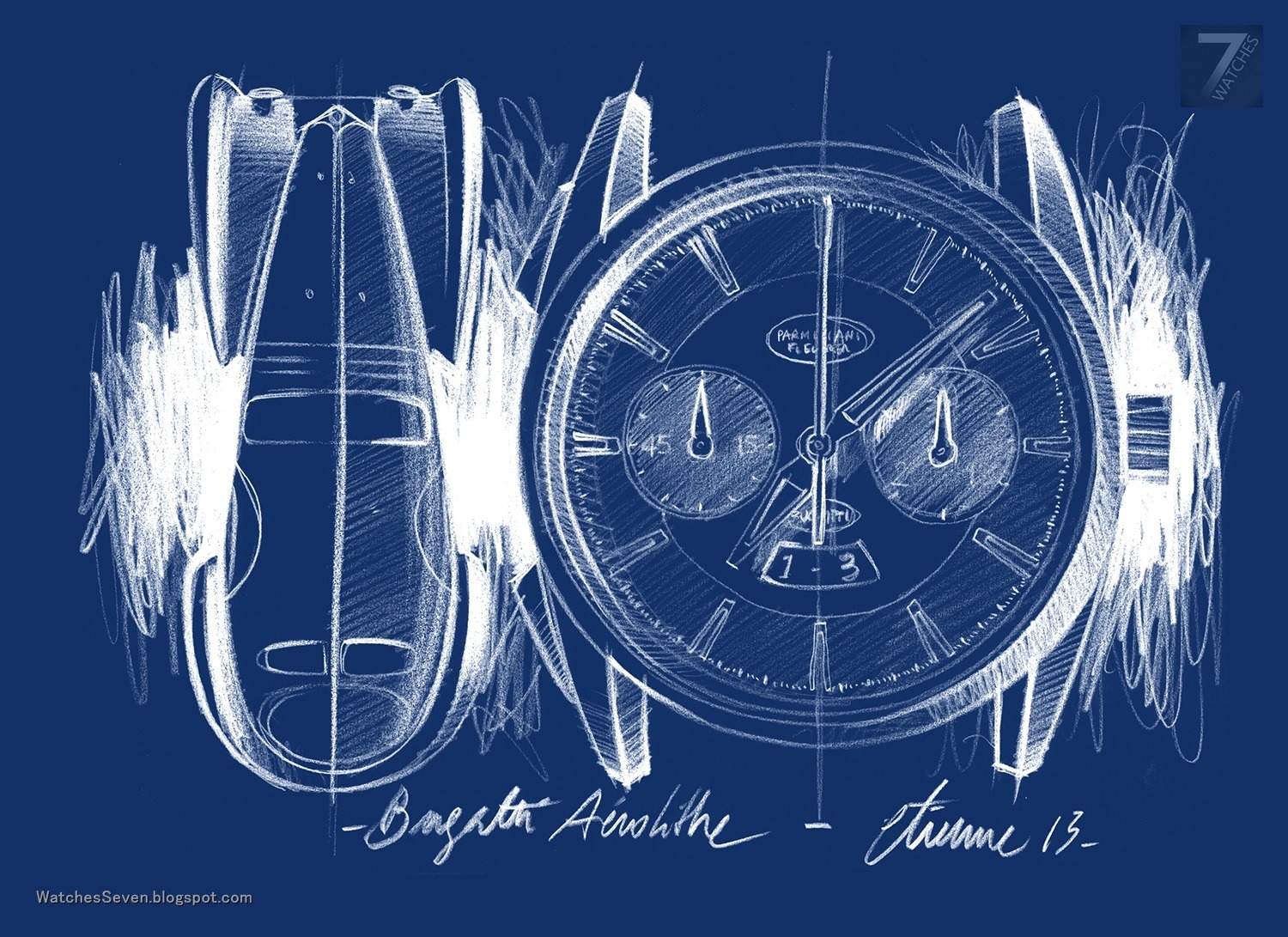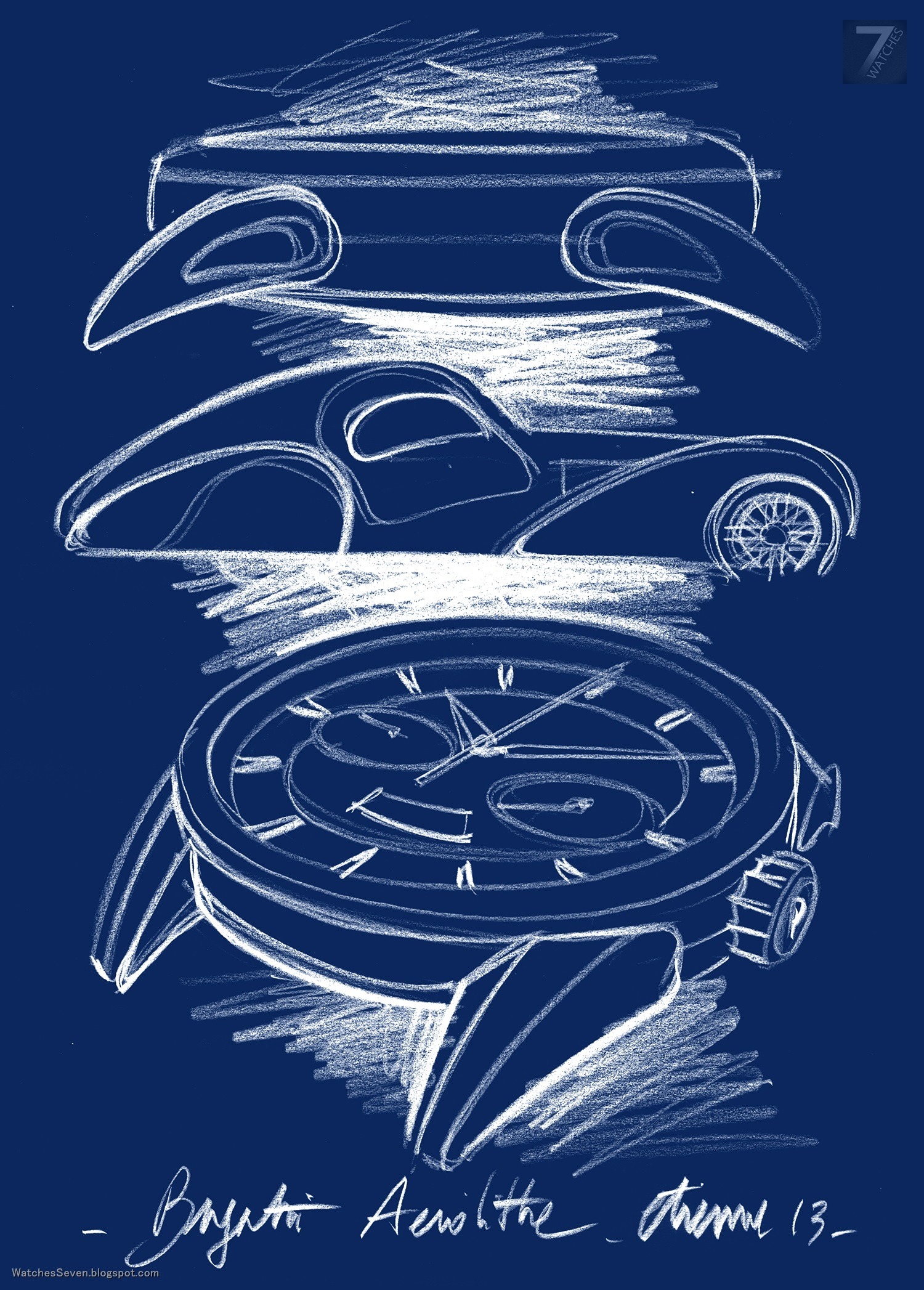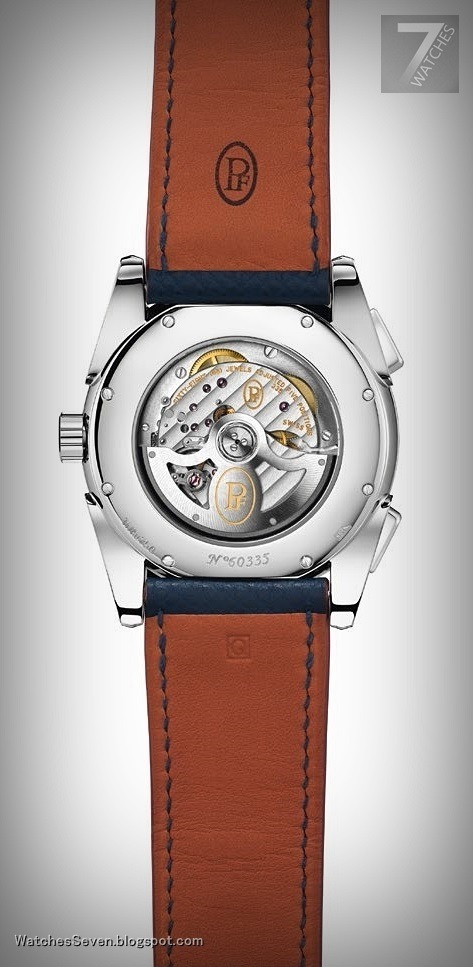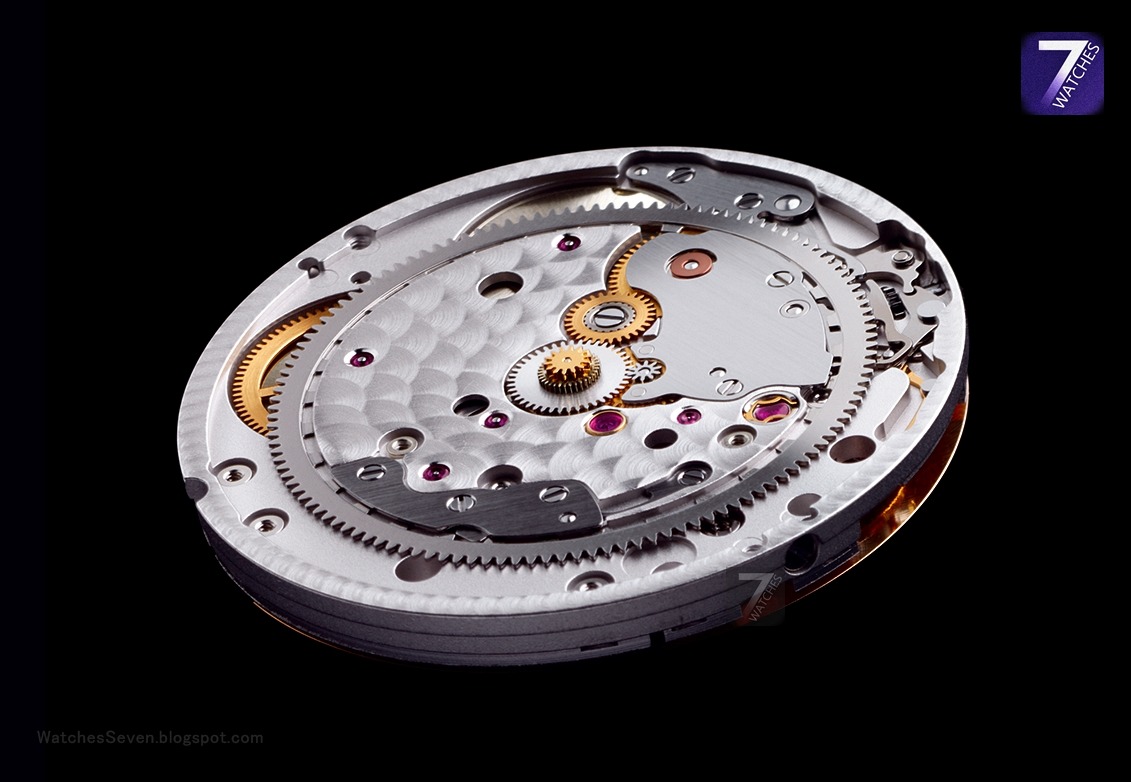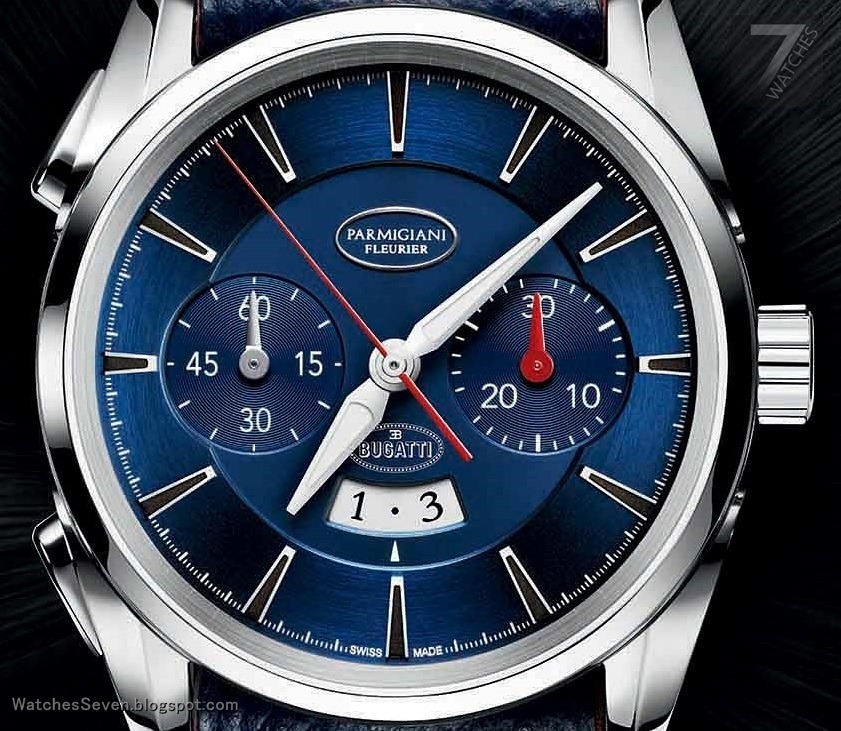
Parmigiani Fleurier - BUGATTI Aerolithe Flyback Chronograph NEW
Parmigiani Fleurier - The Bugatti Aerolithe Masculine Elegance
In 2000, the prestigious brand Bugatti was looking for a strong partnership with a watchmaking company that met its exacting criteria.The brand in question had to be young – young enough for its founder to actively evolve at its heart. It needed a propensity towards technical excellence, but also artistic flair, a heightened awareness of design and the elegance of forms. Lastly, this brand needed an independent manufacture, so that it could offer the production freedom essential for limitless creative potential.
Therefore, it was a logical move for Bugatti to link its destiny with Parmigiani Fleurier, as the brand met and exceeded all its expectations. Since 2001, the Fleurier-based manufacture has striven to create timepieces for the Bugatti collection which are far more than a watch stamped with a car marque logo; they are cars reborn in watch form.
This year, Parmigiani Fleurier is proud to present the Bugatti Aerolithe, a new illustration of this partnership, which has gone from strength to strength in 2013.
Click on the mouse wheel to see the large size ...
HISTORY OF AN EXCEPTIONAL VEHICLE
No car is more shrouded in mystery than the Bugatti Aerolithe.
Shortly after it was unveiled at the Paris motor show in 1935 by Ettore Bugatti, this single model vanished from the face of the earth, leaving behind it just one photograph, a few sketches, and the memory of an enigmatic pale green colour.
However, no-one could forget the material used to create it, which caused such a sensation that year: a magnesium alloy known by the name ELEKTRON – a nickname sometimes given to this avant-garde vehicle. Incredibly light, yet so strong it could not be dented, the body of the Bugatti Aerolithe was dangerously flammable and highly volatile. Its assembly, consequently a very delicate process, required the traditional welding of parts to be replaced with another technique, an incredibly ingenious method of assembly dreamed up by Jean Bugatti, Ettore's son. This solution had a major influence on the car's futuristic look; it consisted of designing the bodywork in two longitudinal sections, riveted together using a dorsal seam structure which travelled the length of the vehicle, from front to end.
So, it was an obstacle, a challenge – the volatility of the magnesium – which gave rise to the revolutionary design of the Bugatti Aerolithe. The result was futuristic curves and harmonious protrusions, characteristic of the "Streamline" design movement, so full of grace that they still take your breath away today.
Click on the mouse wheel to see the large size ...
While this first and only prototype has mysteriously disappeared, its inspired ideas will never fade. Its magnesium body, crowned with the dorsal seam, was adopted for its successor, known as the Bugatti Atlantic, which faithfully reproduced the creative genius of the Molsheim family.
Parmigiani Fleurier has decided to pay tribute to the first in an exceptional line of motor cars by creating the Bugatti Aerolithe timepiece, designed in the image of this long-lost mystery.
HOW CAN THE ESSENCE OF A VEHICLE BE TRANSPOSED INTO A WATCH?
This is the question which constantly drives research into design at Parmigiani Fleurier when working on the Bugatti collection.
The process consists of isolating the car's most striking and distinctive feature – whether it is a shape, a colour or a technical procedure – then transposing this onto a watch, regardless of the technical and spatial difficulties which must be overcome. An ability to think outside of the box.
Click on the mouse wheel to see the large size ...
The distinctive feature of the Aerolithe is the rivet that crosses it from front to end. This is what joins the bodywork and solved the problem of being unable to weld the magnesium; it is also what gives the car its unique character, its fluid and futuristic streamlined look. Therefore, it is this dorsal seam that was replicated on the watch, and which was chosen to be echoed on the four lugs of the piece. The profile of these lugs has not been changed, in line with the brand's visual codes, but their surface has been riveted, to symbolise the genius of Jean Bugatti and the technical prowess which gave rise to the car almost 80 years ag
Click on the mouse wheel to see the large size ...
LES ARTISANS BOÎTIERS TAKE UP THE CHALLENGE
Each time Parmigiani Fleurier starts to design a new Bugatti timepiece, the La Chaux-de-Fonds manufacture Les Artisans Boîtiers braces itself for a new challenge. It knows that there will be many hours of technical meetings and numerous decisions to be taken before the project they receive – a designer's dream transcribed onto paper – can blossom into a veritable timepiece, a piece which has broken through constraints that the imagination couldn’t predict in theory.
In this particular case, it was discovered following the digital simulations, that it was not possible to polish the titanium case of the Bugatti Aerolithe as initially designed, to the desired standard. Its enclosed form did not allow the tools to reach the friction amplitude required for a finish of the optimum quality. This was more than just a mere detail as it was clear that the harmony of the piece, in particular the prominence of the riveted lugs and the very parallels with the car, rest on the delicate play of light that only the correct finish can guarantee.
Click on the mouse wheel to see the large size ...
Les Artisans Boîtiers therefore came up with an ingenious solution which consisted of manufacturing the case with a gap around its base (thereby giving it the amplitude to allow all the high quality finishes required), which is then hidden using a "decorative" ring, ensuring the piece is hermetically sealed.
Click on the mouse wheel to see the large size ...
What started as a constraint was transformed into an aesthetic feature. This titanium ring allowed the textures and colours of the piece to be varied, while at the same time making perfect finishing work possible. There is quite a deliberate parallel between this and the rivet on the car, which initially allowed the welding problem to be overcome, and ended up becoming the Aerolithe's key aesthetic attraction.
DEEP BLUE AND VIVID RED
"Abyss Blue": the most mysterious and captivating colour, and certainly the hardest of the spectrum to achieve. It was an obvious choice to adorn the dial of an exceptional watch like this Bugatti Aerolithe.
Abyss Blue falls within the expertise of Quadrance et Habillage, the watchmaking manufacture which specialises in dials. This hue is obtained by plunging the dial into a galvanic bath, under highly sensitive conditions. An electrolytic reaction takes place - actually an exchange of ions - resulting in a salt which is deposited on the dial material, generating the much sought-after deep blue colour. The true challenge lies in ensuring the repeatability of the process, since the galvanic bath is altered with each exposure.
Click on the mouse wheel to see the large size ...
To regenerate it perfectly and guarantee consistency across the whole line of pieces, calculations and a mastery of the theory are key, but it also depends on expertise and sensitivity that only experience can provide. This is why the Abyss Blue created by Quadrance et Habillage cannot be reproduced outside of their walls.
Over the infinite depths of the dial sit the vivid red hands, which echo the red and black Bugatti logo at six o'clock. This contrast is further echoed in the Hermès strap, with its grained sapphire blue calfskin offset by edging in the high-shine vivid red of the dial.
Finally, the buckle has been completely redesigned to symbolise a car grille, so that the Bugatti DNA encircles the wrist from all angles.
A FLYBACK CHRONOGRAPH
The "flyback" complication is a special aeronautical feature which allows the wearer to stop, reset and restart the chronometer with a single press. It was used by pilots to precisely calculate their flying time for a given course without losing precious seconds manipulating a watch (on a conventional chronograph, the same operation takes three presses on two push-buttons).
Click on the mouse wheel to see the large size ...
In line with the racing car that it represents, the Bugatti Aerolithe timepiece is equipped with the flyback module, which is specially offset at 180° to make it easier to use. The push-buttons are easier to grip and accessible to the thumb rather than the index finger, as they are located at 8 and 10 o'clock instead of at 2 and 4 o'clock as they would normally be.
Click on the mouse wheel to see the large size ...
Thinner than the brand's other chronographs, the case of the Bugatti Aerolithe has a redesigned, more slender, more elevated profile, echoing the captivating curves of the car.
The Bugatti Aerolithe is a both a technical feat and a marvel of aesthetic creativity, in that it distils the distinctive traits of a vehicle whilst remaining, in essence, a Parmigiani Fleurier timepiece. The profile of the piece is identical to that of the entire collection, and the quality of its finishes meets the brand's impeccable standards.
The Bugatti Aerolithe is an intrinsic illustration of the potential an independent manufacture can offer. Its history relates the tale of a perfectly verticalised watchmaking centre, the constituent entities of which are in constant dialogue, ensuring a two-way exchange of assistance and inspiration which gives Parmigiani Fleurier its strength.
-----------------------------------------------------
Technical details
MODEL
Bugatti Aerolithe Flyback – Chronograph
MOVEMENT
PF 335
Self-winding movement
50-hour power reserve
Calibre 13’’’ ¼ − Ø 30.30 mm
Thickness: 6.81 mm
Frequency 4 Hz − 28,800 Vib./h
68 jewels
Two series-coupled barrels
Number of components: 311
“Côtes de Genève” decoration,
bevelled bridges
FUNCTIONS
Hour, Minutes
Seconds at 9 o’clock
Display of the date in a window
1⁄4 second chronograph
(large seconds in centre, 30-minute
counter at 3 o’clock), flyback
EXTERIOR
Round case: 41 mm. Thickness: 12.55 mm
Material: titanium and 18 ct white gold
bezel. Polished and satin-finished
Water resistance: 30 m
White gold shaped push-pieces at 8
o’clock and 10 o’clock
Anti-reflective sapphire crystal
Polished white gold crown: Ø 7 mm
Open case-back
Consecutive number engraved
on the case-back
DIAL
Abyss Blue dial, satin-finished flange, opaline
centre, snailed counters at 3/9 o’clock
Rhodium-plated applique indexes with
luminescent coating, Delta-shaped hands
with luminescent coating
LEATHER
Hermès alligator with 18 carat gold ardillon buckle, polished finish
Hermès Epsom calfskin with adjustable
titanium folding safety clasp
-----------------------------------------
www.facebook.com - Parmigiani Fleurier
--------------------------------------------------------------
www.Parmigiani.ch


